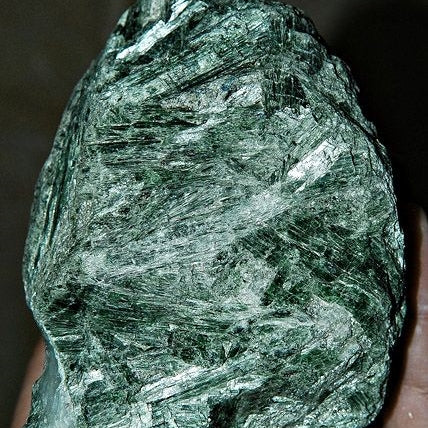What other minerals are next to Colombian emeralds?
Colombia, famous for its world-class emeralds, is a true geological treasure that houses a variety of minerals found in close association with these beautiful green gems.
As we explore emerald mines in this South American country, we realize that the land hides more secrets than just emeralds.
In this article, we will immerse ourselves in the exciting world of minerals associated with emeralds in Colombia, discovering their beauty and uses in various industries.
How does a Colombian emerald form?
Before we enter the associated minerals, it is important to understand a little more about Colombian emeralds and their origin. Colombia is widely recognized as one of the world's leading emerald producers, and the reasons behind its reputation are both geological and historical.
Emeralds are green varieties of berilo mineral, and their characteristic color comes from traces of chrome and vanadium present in their crystalline structure. These gems form in specific geological environments, usually in sedimentary rock veins. Colombia, in particular, offers exceptional geological conditions for the formation of emeralds, thanks to its unique geological history.
Minerals next to Colombian emeralds
1. Quarzo
quartz is one of the most common minerals found next to emeralds in Colombia. It often occurs in the form of colourless or white crystals. Its association with emeralds is important, as it acts as a geological indicator that can help miners identify promising areas for the search for emeralds.
2. Calcite
Calcite is another mineral that is commonly found in association with Colombian emeralds. This carbonate mineral may appear in different colors, but it is often presented in yellow, pink or green tones, which creates a fascinating contrast when it is next to a deep green emerald.
3. Mica
The mica, known for its structure in fine sheets and its characteristic brightness, is another mineral found in Colombian emerald mines. Their presence can be a challenge for miners, as it sometimes sticks to emeralds during extraction, which requires careful cleaning.
4. Feldespato
The feldspar is a silicate ore that is often found in igneous and metamorphic rocks. In Colombian emerald mines, the feldspar can be an important component of the rock matrix that houses the emeralds.
5. Pirita
The pyrite, colloquially known as the gold of fools, due to its golden appearance, is another mineral that is sometimes next to the emeralds in Colombia. Its metallic glow can provide a surprising contrast when you are near a green emerald.
6. Dolomite
Dolomite is a calcium carbonate mineral and magnesium that can form colourless white crystals. In Colombian emerald mines, it is often found in the form of veins in the rock matrix containing emeralds.
7. Apatita
The apatite is a calcium phosphate that occurs in several colors, including blue, green and yellow. Although it is less common than other associated minerals, its occasional presence adds an additional element of beauty to emeralds.
Why are emeralds born alongside other minerals?
The presence of these associated minerals in Colombian emerald mines has important geological implications. It indicates that emeralds were formed in a complex and diverse geological context, in which several geological processes intervened in their creation.
The combination of minerals such as quartz, calcite and mica suggests the interaction of hydrothermal fluids and metamorphism in the formation of emeralds. This information is valuable for geologists and scientists who study the geology of the region and seek to better understand the geological processes that gave rise to Colombian emeralds.
What uses do other minerals have?
In addition to their geological importance, many of the minerals associated with Colombian emeralds have significant industrial and scientific applications. Here are a few examples:
- Quarting in the electronics industry: quartz is widely used in the manufacture of electronic components, such as quartz oscillators and crystal watches.
- Calcite in agriculture: Calcite is used as a soil amendment in agriculture to correct the acidity of the soil and improve its quality.
- Mica in the cosmetic industry : Chemis is used in cosmetic products, such as eye shadows and lip gloss, due to its brightness and texture.
- Ceramic and glass Feldespato: The feldspar is an important component in the manufacture of ceramics and glass, helping to melt the materials at lower temperatures.
- Pirite in the production of sulphuric acid: Pythical is used in the production of sulphuric acid, a key industrial chemical.
- Dolomite in construction: Dolomite is used in construction as an addition for the manufacture of concrete and as a filling material.
- Apatite in the fertilizer industry: Apatita is an important source of phosphorus, an essential component of fertilizers.
Paula A. Bonilla
Social communicator and journalist from Sergio Arboleda University in Colombia. She is also a jeweler and is passionate about constantly learning about precious gems and national high jewelry.
Currently, she is working for one of Bogotá's most important jewelry stores, Emerald by Love. This jewelry store has over 40 years of experience and has 2 physical branches in the capital city of Colombia, located in the city center.


